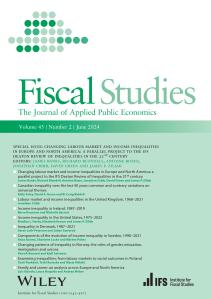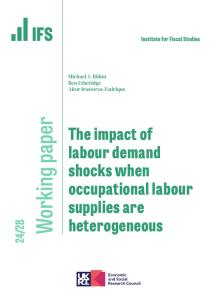Globalisation, inequality, feeble productivity growth, earnings stagnation, the falling labour share of national income — the most important features of economic life. And one institution binds them together: the firm.
It’s no coincidence that ownership and control over the means of production has long been at the root of the conflict between capitalists and socialists. Nor that some of the most important economic battles in American history were fought over antitrust legislation (competition laws) at the turn of the 19th century. Nor that all big economies have developed huge infrastructures governing the legal forms and responsibilities of firms, regulating competition and constraining their behaviour towards both workers and customers.
Yet we rarely join up our thinking, let alone our policy. The sectoral regulators have their remits narrowly drawn. Not for them to worry about earnings or productivity or inequality. Meanwhile, one part of central government might be looking at how to get more tax from the technology giants, while another part focuses on consumer protection and yet another worries about how to promote productivity and earnings growth.
That’s why a set of papers published last month as part of the IFS Deaton Review of inequality in work, led by John Van Reenen, professor at the London School of Economics, is so important. We decided early on that to understand what is happening to inequality between people — the thing we care about in the end — we need to understand the behaviour of, and inequality between, firms. And my goodness how revealing that was.
The first thing to jump out is just how unequal firms are, in just about every dimension. Only one company in a thousand has more than 250 employees, yet this tiny number accounts for 40 per cent of jobs and half of aggregate turnover. Only 8,000 firms in the UK employ 11 million people and between them turn over more than £2 trillion. These bigger firms also tend to be much more productive and offer better pay and conditions to their workers than do small firms (something well worth remembering, as the latter tend to be lauded to the skies while the former are often blamed for all society’s ills).
More important has been a divergence in performance. The overall lack of productivity growth across the economy since 2007 or so is well documented, but the divergence in productivity between firms dates from well before that. The top 5 per cent of companies in the UK, “frontier firms”, enjoyed productivity growth of about 60 per cent between 1996 and 2010. For the remainder, productivity grew by only just over 10 per cent. Median productivity has not increased at all since the late 1990s.
That is consistent with evidence that, even after taking account of their own skills and abilities, workers’ wages and wellbeing increasingly depend on the firms they work for. Larger and more productive firms pay higher wages and the same worker can get very different wages depending on the firm where they are employed. Increasing differences between firms will translate into increasing pay dispersion between workers and higher overall income inequality.
At the top of the firm, distribution profits and mark-ups, the excess of price over variable costs, also have risen dramatically, though again these firms are quite different from the rest. Mark-ups have not increased at all at the median.
That’s a lot of change. Some of it, especially in the United States, is explained by the growth of “superstar firms” those such as Apple, whose market value hit $3 trillion at the start of the year, a number bigger than UK national income. Such Big Tech firms are huge, highly profitable companies, often paying very high wages. Rather like the monopolies of late 19th-century America, they have built quasi-monopolistic positions off the back of the high fixed costs and network effects that characterise these sectors. In 1889 Joseph Keppler, the political cartoonist, depicted a sign hanging on the wall of the US Senate reading “This is a Senate of the monopolists, by the monopolists, for the monopolists” — a response to the lobbying power of those industries. We may be seeing this sort of power exercised again across the Atlantic. And, as Jean Tirole, the Nobel prize-winning economist, has pointed out, the challenges of regulating these supra-national entities in the digital age are far greater than anything faced by legislators in the 19th and 20th centuries.
Big Tech can’t explain everything. In Britain, at least, there isn’t enough of it. The increasing importance of “intangible capital”, such as software, management practices and marketing, may also play a role. The advantages conferred by high levels of investment in such capital can stymie competition. Globalisation, automation, institutional developments all contribute to this changing landscape.
Whatever the explanations, large firms with high mark-ups increasingly dominate many markets. This appears to be a general feature of developed economies. In the European Union and Britain, at least, it is hard to point to any general decline in antitrust enforcement. So it looks like fundamental market forces are driving this agglomeration of profit and market power.
That doesn’t mean such “superstar” firms cannot undermine the welfare of consumers and workers, even if they gained their powerful positions primarily through the forces of technological change and globalisation. The case for a strengthening of competition policy, then, is strong. We could start by changing the standards of proof in merger and acquisition cases. Reducing regulatory barriers to entry and increasing openness to trade are both likely to both raise productivity and increase competition.
All this boring stuff about how firms are regulated and governed and how competition policy works is fundamental to determining the kind of society we live. As Keppler could have told you.
This article was first published in The Times and is reproduced here with kind permission.









